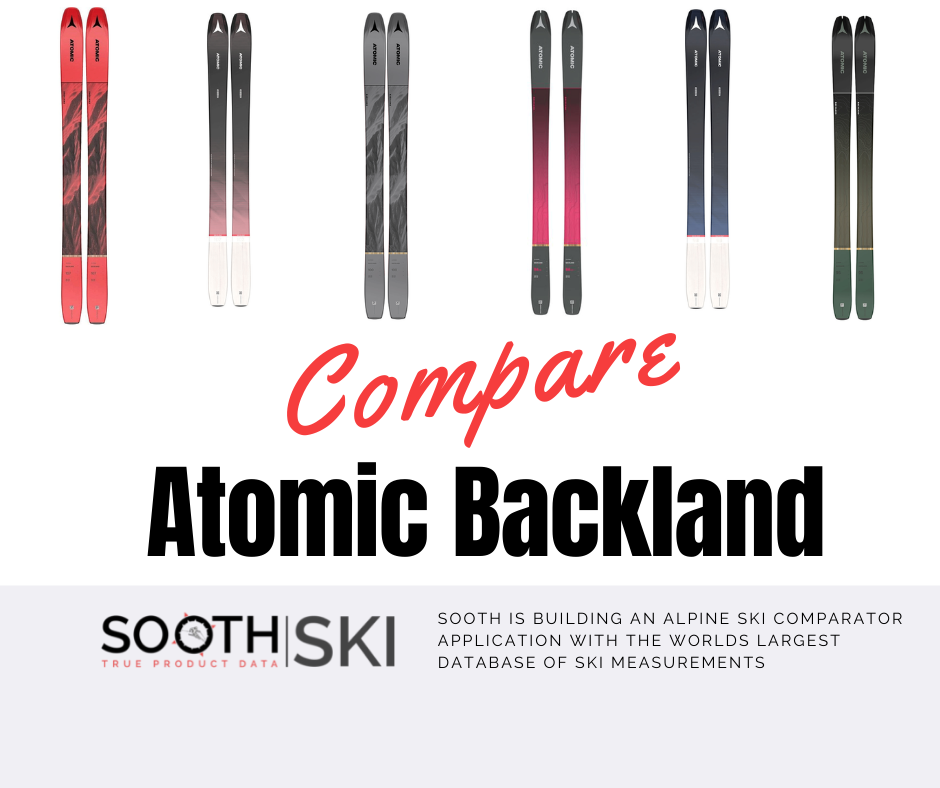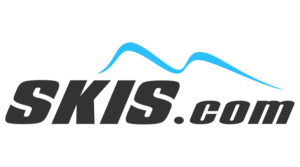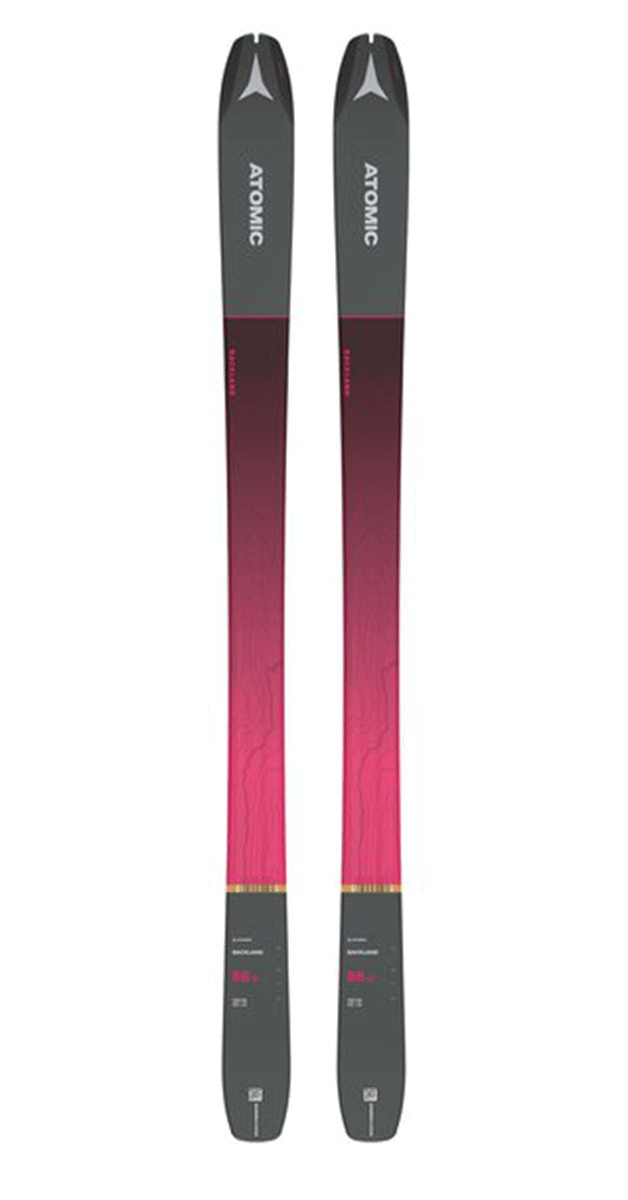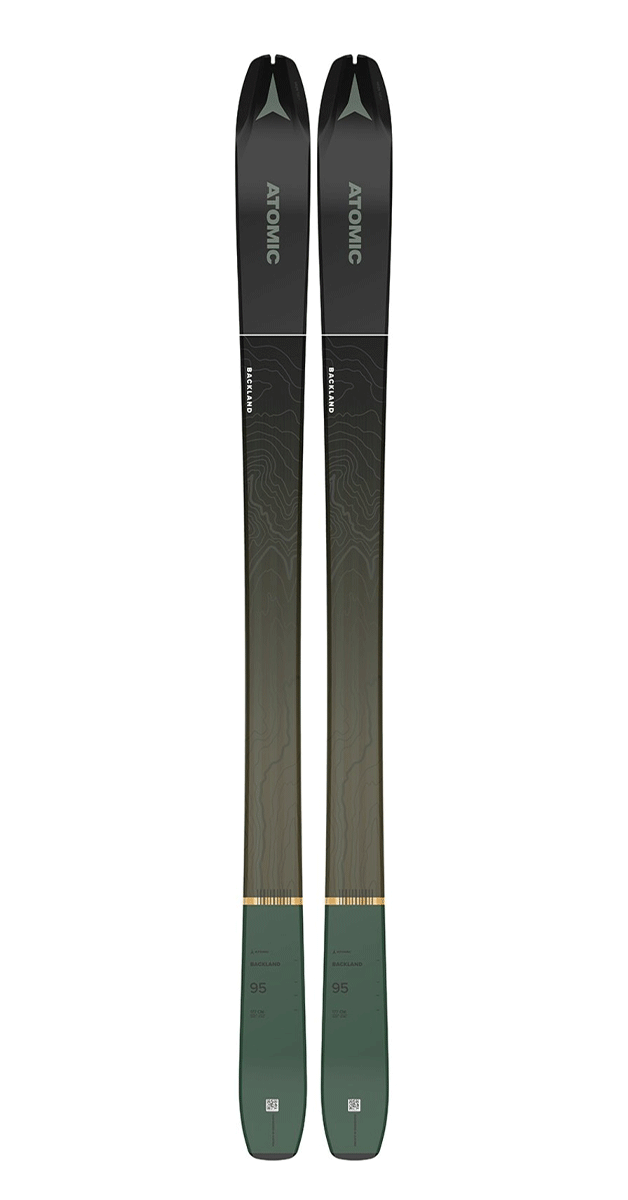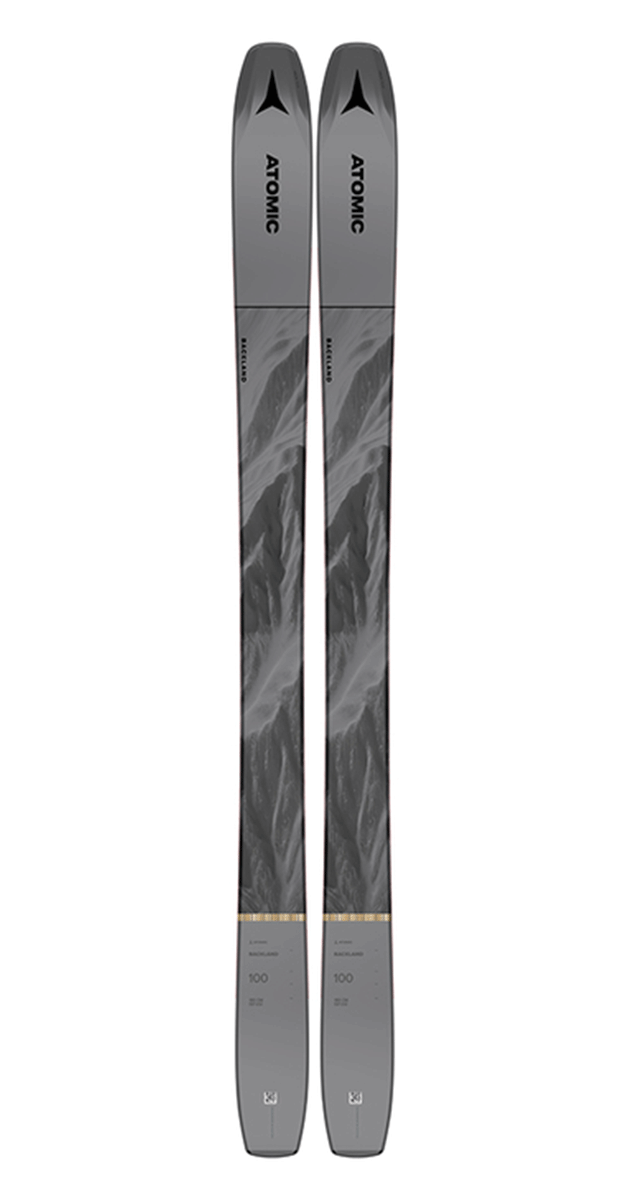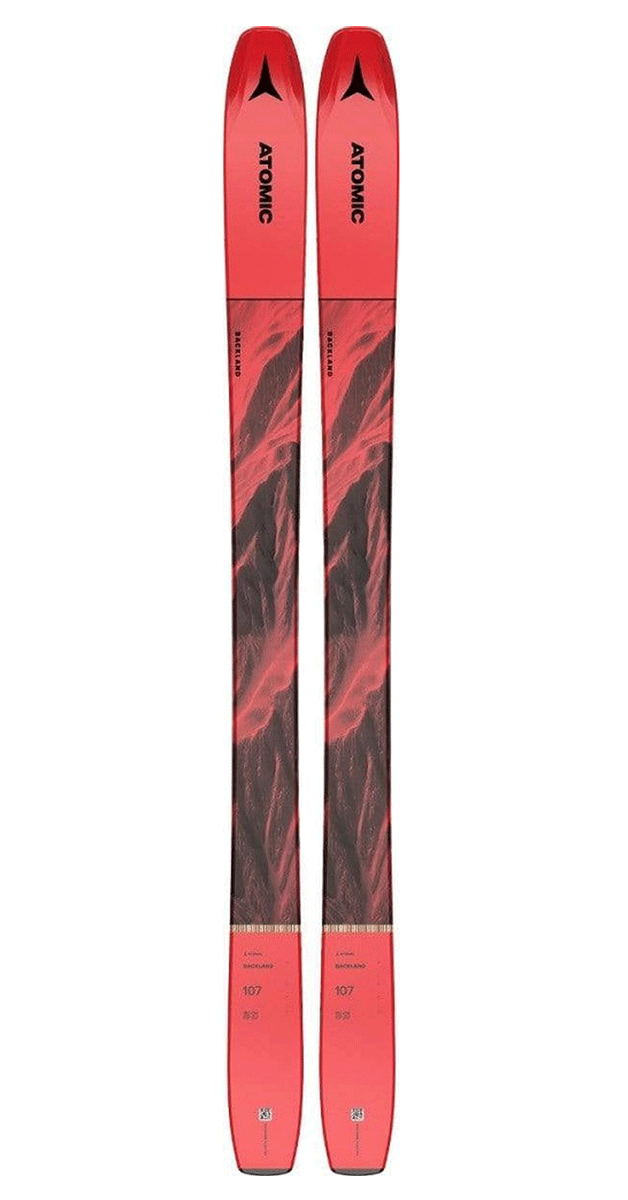Atomic Backland Series Overview
The Atomic Backland is a lightweight backcountry (touring) series of skis. There are a few sub-categories ranging from super lightweight skimo to super float 117mm underfoot, and a full progression of underfoot width options. Overall, there are 16 models of Atomic Backland that are offered in various lengths.
The first thing I noticed when we measured the Atomic Backland is how light weight they are. Just picking up the skis from the shelf is astonishing. In this series, Atomic uses constructions that produces very light skis that still offer interesting stiffness levels. Accordingly, the surface-to-weight ratio, which we like to use to describe backcountry skis is one of the highest we have measured so far! This means that no matter what model or length you choose, they will have an extremely low weight for skis of similar surface area.
Atomic presents four sub-categories, namely the Unisex (or men), the Women specific, and two very lightweight options under the SL and UL. Our measurements also show that the line-up of Unisex and Women can be broken down into two different orientations based on their shapes. The shift happens around the Backland 100. Anything below a waist width of 100 mm has it's shape adapted to firm snow skiing, while anything above 100 mm is adapted for powder skiing with features like increased rocker.
The surface-to-weight ratios across the model we measured are very consistent at about 1,3 cm²/g in the 180cm lengths, except for the Backland 100 that has an impressive surface-to-weight ratio of 1,44 cm²/g. This means that even if the Backland 100 is larger and has more surface area compared to the Backland 95, but is also lighter! It is a bit of an outlier in this series, so be aware that they will provide different on-snow feels.
As for many light skis, their bending and torsional stiffness levels are lower than other similarly shaped skis. However, we found that for their surface-to-weight ratio, the bending stiffness levels are typically medium-high and the torsional stiffness levels are typically high.
Looking at the Women specific skis, our measurements of the Backland 100 and the Backland 98 W in 164cm show that that are both practically identical for every aspect we consider (see detailed comparison here). They have the same shapes, same weight, same bending stiffness and same torsional stiffness.
What are the Atomic Backland options available?
According to Atomic catalog, there are 16 models of Backland skis in 21/22 and those come in different lengths. At the time of writing, we had 35 Backland skis measured and available for you to compare in our online Ski Comparator. Of those, 15 are from season 21/22. The table below summarizes the options available in 21/22 catalog.
Width | Unisex | Women | UL & SL |
|---|---|---|---|
65-80 mm | Backland 78 | Backland 78 W | Backland 65 ULBackland 78 ULBackland 80 SL |
85-90 mm | Backland 85 | Backland 85 W | Backland 85 ULBackland 85 W ULBackland 86 SL |
95-100 mm | Backland 95Backland 100 | Backland 98 W | Cell |
105+ mm | Backland 107Backland 117 | Backland 107 W | Cell |
Comparing The Atomic Backland Popular Options
Our comment and observations below are based on the 35 Backland skis we have measured. We picked four models of interest (Backland 86 SL, Backland 95, Backland 100 and Backland 107) and compared them for similar lengths. We use lengths around 180 cm in this case. This is important as many properties change with ski length. Our detailed measurement are available here. You can use our database to compare other lengths and models.
Backland 86 SL
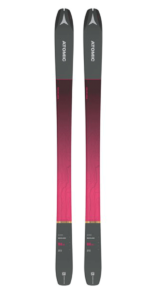
The Atomic Backland 86 SL is not a skimo, but at 1300 grams, it can definitely be considered Super Light! The rockers and tapers are shorter, which will provide more support and stability on hard surface. It also provides more bending stiffness, which is interesting for skiing faster on harder snow.
If you want a ski mainly for touring and would use it very occasionally on the resort, this might be an interesting option. However, the other way around may not be the best option. There are better resort oriented options that would also do well occasionally backcountry skiing.
Backland 95
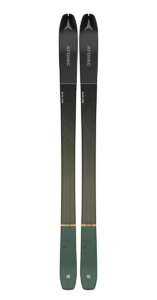
Like the 86 SL, the Backland 95 also has a subtle rockers and a long sidecut length, for more stability on hard surfaces. With 95 mm waist, it can float but is also narrow enough to handle harder surface. The radius is slightly shorter, so more reactive. It would be the right choice for the skiers who would prefer a one-ski quiver for up-hilling, and go touring no matter the snow conditions (crust, hard packed, powder...).
Be aware that even if it's close to the Backland 100 in waist width, it is a different beast.
Backland 100
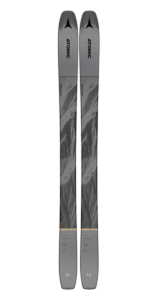
The Backland 100 is considerably different when compared to the Backland 95, despite only a 5 mm waist width increase. Its design show many powder oriented features like longer rockers and tapers. This makes this skis more playful and easier to pivot in soft snow and uneven terrain (soft bumps). It would not perform has well on hard surfaces. The choice between the 95 and the 100 really depends on the main conditions you anticipate to ski the most. If you go touring no matter the the snow condition, the 95 would be better. If you go touring when the snow is soft and deep, the 100 is a better option.
Backland 107
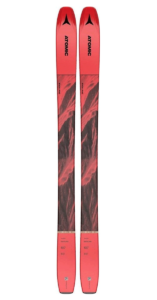
The Backland 107 is clearly powder oriented with a bit more of a freeride flavour. It has the highest rockers and tapers. It is also 300 grams heavier than the 100. With this extra weight also comes about 20% more torsional stiffness, which would be useful for charging even when the snow is not super fluffy. This options may be more interesting for skiers that want more float and more responsiveness, due to the extra torsional stiffness.
The Atomic Backland evolution in time
Comparing the Backland 100 and 102 from 2019 to 2022
Yes, there has been a few changes over the years. See our detailed comparison between the 19/20 Backland 102 and the 20/21 and 21/22 Backland 100, in 172 cm. The main differences observed are:
- The weight was significantly reduced over the years, by as much as 12% to 14% per year! This is quite an engineering achievement, considering that during this same period, the bending stiffness level increased a bit and the torsional stiffness increased significantly!
- Accordingly, the surface-to-weight ratio went from 1,17cm²/g in 19/20, to 1,3cm²/g in 20/21 and now 1,49cm²/g in 21/22 for those specific skis.
- The radius stays between 17m to 18m for this specific length.
- The running length is about the same for all three skis.
- The tail height has decreased significantly from the 19/20 version.
COMPARE ALPINE SKIS
What skis are similar to the Backland series?
There are similar options to the Atomic Backland series. However, you will notice from the comparisons below that similar waist width along with similar surface to weight does not mean that they will ski the same. Lets have a look at a few models form other brands such as DPS, Blizzard, Dynafit, Dynastar, Fischer, K2, Line, Rossignol and Völkl. The table below is a comparisons summary we have made.
Skis compared | Highlights |
|---|---|
Atomic Backland Versus Other 80-90mm underfootBlizzard - Zero G 85Dynafit - Backlight 88Völkl - Rise Above 88Dynastar - M-Tour 87 | These skis have the same width and similar surface to weight ratio (all above 1,30 cm²/g). All are under 1300g skis! The Dynafit Backlight 88 has a nearly flat camber, while all others are normal camber. The Atomic Backland 86 SL, Blizzard Zero G 85 and Dynastar M-Tour 87 are very similar on the bending and torsional stiffness profiles. The Dynafit Backlight 88 has a higher level of bending stiffness. The Völkl Rise Above 88 has very different bending and torsional stiffness profile, including a higher torsional stiffness level in the tip and tail . The sidecut radius is significantly different from one to another. The Dynastar M-Tour 87 is the shortest at 15,4m and the Blizzard Zero G 85 is the longer at 22m. The Dynastar M-Tour 87 has the most pronounced front rocker shape for length and height. |
Atomic Backland Versus Other 90-100mmBlizzard - Zero G 95Fischer - Hannibal 96Rossignol Blackops Alpineer 96Völkl Rise Beyond 96 | These skis all have a surface to weight ratio above 1,4 cm²/g, which is very impressive! All under 1350g skis! The bending stiffness if very different from one model to another in the front area. The Atomic Backland 100 and the Blizzard Zero G 95 are very similar on the overall torsional stiffness profile. Furthermore, the torsional stiffness is almost the same in the tail area for all those models. The Völkl Rise Beyond 96 will feel more stable on hard surface, due to longer sidecut length, followed by the Fischer Hannibal 96. The rockers are very similar except for the Völkl Rise Beyond 96, that has less rocker. The sidecut radius are homogeneous in this comparison, with variations from 18 to 22m. The Rossignol Alpineer 96 has the longest and highest front rocker. It also has the softer tip area in bending and torsional stiffness, despite a stiffer center area. The Völkl Rise Beyond 96 has a longer sidecut length, and stiffer tip on bending and torsional stiffness, which procures stability on hard snow. The Fischer Hannibal 96 has the lowest bending and torsional stiffness levels overall. |
Atomic Backland Versus Other Above 100mmDPS Pagoda Tour 112 RPK2 - Wayback 106Line - Pandora 110 | These skis are all under 1600g, which is impressive for skis that are above 100mm underfoot! The surface to weight is also impressive, all above 1,3 cm²/g. They all have a nearly flat camber and large rockers, except the Line Pandora 110 that has a shape closer to a twin-tip park ski. The tip rockers are all above 20%. The DPS Pagoda Tour 112 RP has only 53% sidecut length, which provides a very small radius of 15m. It also has a tail rocker of 22%, which is 6-9% longer than the other skis. The setbacks are very different. The DPS Pagoda Tour 112 RP sits at 14,6cm, while the Line Pandora 110 has only 5,5cm. All of those skis have almost the same tail profile on bending and torsional stiffness. The K2 Wayback 106 has the stiffest front area for both bending and torsional stiffness. |
Atomic Backland review conclusions
The Atomic Backland has some impressive specifications as a backcountry (touring) ski. It clearly scores well on the surface to weight ratio, no matter which size. Up to a waist width of 95, it is targeted for firm snow. Above that, the shape is different and clearly targets more playful feelings in soft snow. There are no significant differences between the Women and the Unisex models. There are many other light skis out there, but the Backland remains a light ski with above average levels of bending and torsional stiffness. Over the past years, while the weight has been decreasing, Atomic maintained or increased the stiffness levels.
affiliation & relations with shops
To help us further develop our measuring technology and our Ski Comparator Application, we have integrated some affiliate links and we also refer to shops who have welcomed us to measure the skis they sell. We may receive indirect compensation from shops if you use an affiliate link either from our website or our Ski Comparator Application. We may also refer skiers to shops that support our project by giving us access to measure skis. We thank you for helping us maintain our Ski Comparator Application 100% free.
You are also welcome to contribute with donations. Thank you for supporting us.

